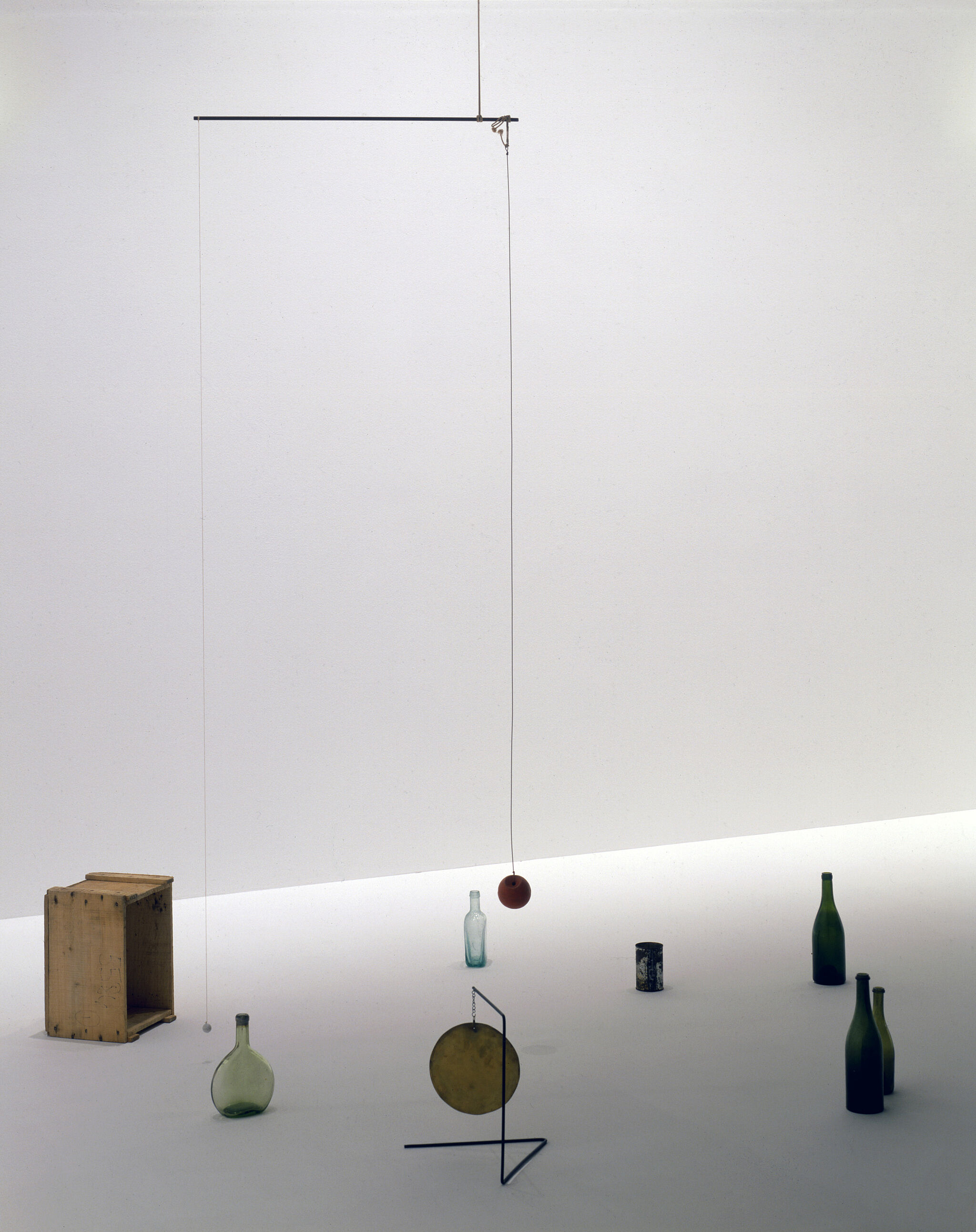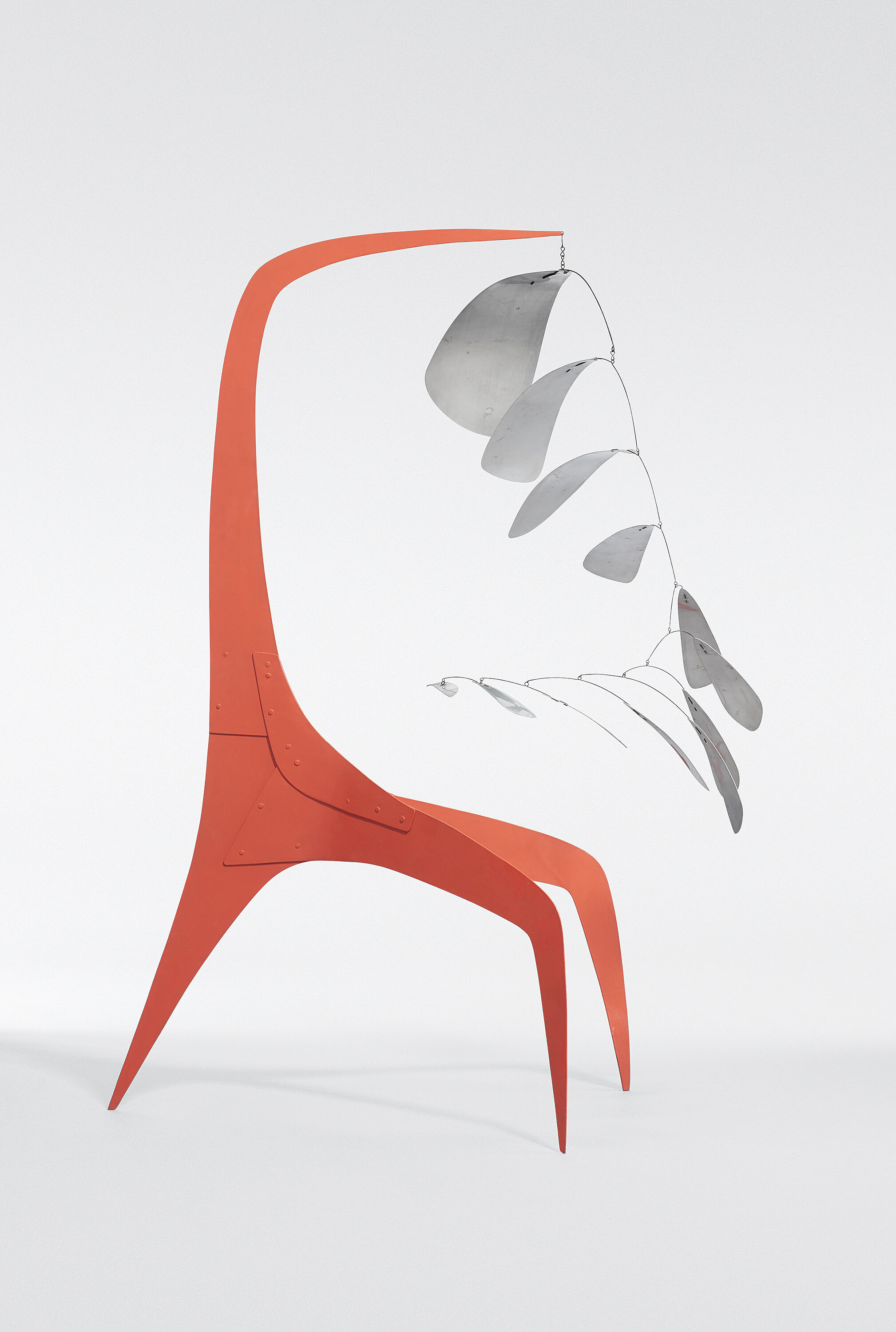Small Sphere and Heavy Sphere, 1932/33Christian Marclay and Okkyung Lee
Jul 19–21, 2017
This event has passed.
See more events like this.
Become a member today!
Join now to enjoy early access to exhibitions and events, unlimited free admission, guest privileges, and more.
Join nowLearn more about access services and programs.
Floor Three, Susan and John Hess Family Theater
Calder: Hypermobility features an expansive series of performances and events, bringing contemporary artists into dialogue with Alexander Calder as they interplay their own disparate practices with his innovations. The first event of the series will feature artist and composer Christian Marclay in performance with cellist Okkyung Lee. Marclay will activate Small Sphere and Heavy Sphere, 1932/33, Calder's first hanging mobile. Lee will respond musically to the movement qualities, sonic elements, and visual nature of the piece.
Small Sphere and Heavy Sphere is an eccentric conceptual work that engages avant-garde music, viewer intervention, chance, and variable configuration. The mobile consists of a heavy iron sphere and a smaller wooden one that hang on either end of a horizontal iron rod. Situated on the floor by the viewer are objects discarded in the course of everyday life that Calder repurposed as "impedimenta" (glass bottles, a tin can, a wooden crate, etc.). When the iron sphere is activated, the wooden sphere is propelled on an unpredictable series of misses and collisions with these objects. At once visual and surprisingly aural, Small Sphere and Heavy Sphere is an open composition: Calder did not set any final placement of the impedimenta; instead, he intended the viewer to step into the role of composer and determine the arrangement, thereby removing the artist's control. The result is a chance-based sound score. It provokes a disquieting feeling that builds and releases as the viewer tries to anticipate the moment when the ball might strike.
Christian Marclay will begin with an arrangement of Calder’s objects and activate the mobile. Throughout the performance he will reconfigure the elements, revealing the open interpretive nature to the work. He plans to intervene and add new items that offer disparate sonorous qualities that will further augment the sound palette and visual field of the work. Okkyung Lee will improvise in response to the elements of Calder’s mobile, including the sound cues, the ephemeral line drawn in space by the small sphere, the movements of the wooden rod, an emotional or narrative reading of the piece, and more.
July 19 and 20
8 pm
July 21
1pm
Doors open a half an hour in advance of performance start time. Tickets are required ($22 adults; $18 members, students and seniors). Museum admission included for matinee performance on Friday, July 21 at 1 pm. Capacity is limited. Visitors are encouraged to purchase tickets in advance. Online ticket sales close two hours before the performance begins. Any remaining tickets will be sold at the admissions desk on a first-come, first-served basis.
Additionally, from July 19–23, Whitney art handlers will activate Small Sphere and Heavy Sphere in an arrangement determined by Marclay, in the Susan and John Hess Family Theater. Due to high demand, these intimate viewings will be ticketed on a first-come, first served basis. Please visit the admissions desk in the lobby when you arrive to request a free ticket.
July 19, 20, 22, 23
1 pm, 3 pm, 5 pm
July 21
4 pm, 6 pm, 8 pm, 9 pm



